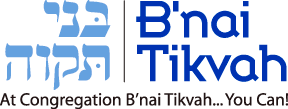When we are called to prayer with the Barchu, a small but meaningful ritual dance takes place. The ark is opened, the shaliach tzibbur (prayer leader) bows and declares Barchu et Ad-nai hamevorach. In response, the congregation bows and recites Baruch Ad-nai hamvorach l’olam vaed. To which the shaliach tzibbur bows and offers the same response: Baruch Ad-nai hamvorach l’olam vaed. At that point, the ark is closed and we are seated.
Let’s take each piece one by one. As far as the ark opening is concerned, this is our local custom. It is not done in most Conservative or Orthodox shuls. But there is a clear logic behind it. A very important Jewish spiritual admonition reads: “Know before Whom you stand.” Knowing G-d is, of course, an insurmountable task. But opening the ark, and seeing the Torah scrolls there, has something of the effect of standing at the Lincoln Memorial before that powerful statue. It surely focuses the mind.
Then the prayer leader says, “Bless Ad-nai, Who is to be blessed (or, “Who is the Source of blessing”). This is not just a statement, but also a command. And it is a command not just to the individuals sitting in shul, but to the community as a whole. The community should bless G-d.
Once the command is given, the congregation offers the blessing that has been demanded of us: “Blessed be G-d Who is to be blessed forever and ever.” We bow as we say this, which reflects the original root of the word “baruch”—“berech” which means, “knee.” A blessing was originally a “bending of the knee,” an act of submission and respect.
After the congregation concludes its blessing, the prayer leader repeats word-for-word the blessing offered by the congregation. Why does he/she do this? Because the prayer leader actually has two roles to play simultaneously. On the one hand, obviously, they are the prayer leader. On the other hand, they are members of the congregation like everyone else. As the prayer leader, they call the congregation to prayer. As a member of the congregation, they respond the way any congregant would. The community is not complete if even one person does not fulfill its task. That is where the concept of minyan (literally, “count”) comes from. It would obviously be impossible for every single person in the community to be present for prayer services three times a day. The minyan of ten has therefore been designated as representative of the entire community.
There is something deep and delicious in the dual role the prayer leader plays. We are reminded that the shaliach tzibbur (literally, “the one who is sent from the congregation” to convey the congregation’s prayers to G-d) must themselves be a member of the congregation. One might imagine that the opposite were the case—that the representative of the congregation should be a member of a chosen elite. But no, the whole point of the exercise is that “one of us” is going to lead “all of us” in directing the community’s thoughts toward G-d.
